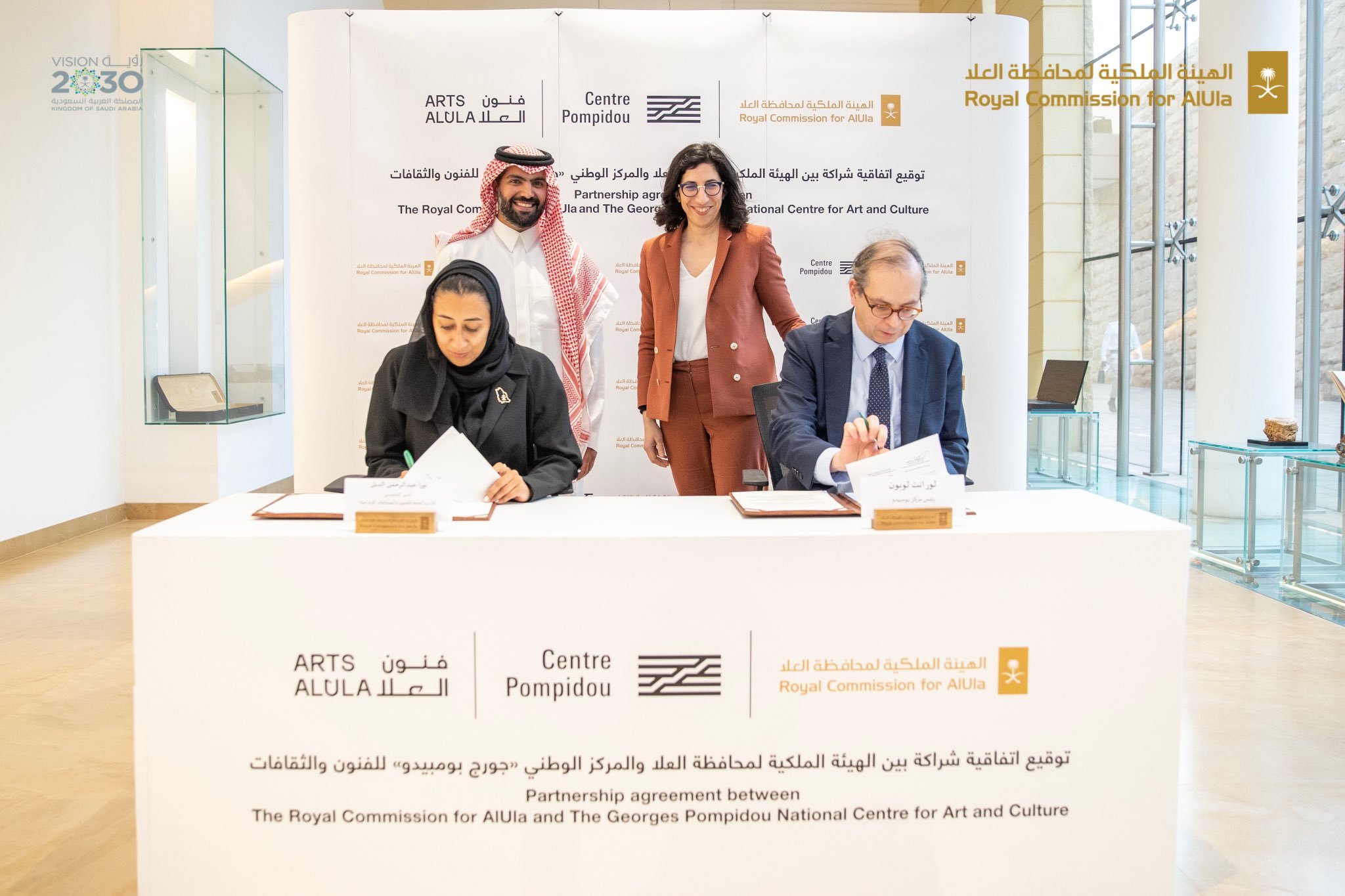An Analysis of the Pompidou’s New Saudi Outpost
By Jake Erlewine
The Centre Pompidou, in an effort to broaden its international reach, has reached an agreement with the Saudi government to build a new art museum in AlUla, adding to its outposts in Shanghai, Malaga, and Metz. The museum will reportedly showcase contemporary Saudi and Afro-Asian art collections, along with examples of 21st-century land art and a new artists-in-residence program. Within the statement released by the Saudi Royal Commission for AlUla (RCU), it is stipulated that Beaubourg “will contribute its scientific and technical expertise in the training of staff, particularly in the areas of conservation management of collections and mediation,” and that there will be an inter-museum exchange of works between the Paris and AlUla locations. The compensation which the French Goverment will receive for use of the Pompidou brand is as of yet unclear. Arts AlUla director Nora Aldabal remarked that “Our collaboration with Centre Pompidou is another important step in our goal of empowering a thriving community of local artists and driving knowledge and skills within the sector.” Still, one cannot help but wonder whether the raising of an arts community in a remote area of Saudi Arabia displays ulterior motives.
Left to right: Nora Aldabal, Prince Badr bin Farhan, Rima Abdul Malak and Laurent le Bon. Image: Centre Pompidou
The soft power of art is one that has been exploited for centuries, and in terms of the neo-colonialism associated with this type of state cultural exchange, it is unnecessary to look further afield than France. The exchange of cultural goods in this context is embodied in the Musee du Quai Branly in Paris, and inversely in the Louvre Abu Dhabi. Central to this idea of making monetary gains with cultural objects is the showcasing of a universalist ‘Frenchness’ which rebuffs France’s rising ethnic diversity and instead favors homogeneity. Within Paris, the general consensus is that the presentation of indigenous art within the Musee du Quai Branly presents a near-dioramic view of non-French culture, otherising it by showing more concern for anthropology, rather than aesthetics. This places French culture on a level above the indigenous cultures on display. On the other hand, the Louvre Abu Dhabi is an example of French universalism in a non-French country, where French culture is essentially sold through foreign museum outposts, which tend to exhibit predominantly Franco-European collections. Petrostates, such as the UAE and Saudi Arabia, can then acquire this form of French exceptionalism in the form of Western artworks, which not only bolsters tourism but provides a gilded sheen to their respective regimes. The French, in turn, receive both a monetary boost and - perhaps more importantly - the ability to control the foreign perception of French culture.
The Pompidou extension, through exhibiting works by contemporary non-Western artists, marks an inversion of the narrative surrounding Western satellite museums. By showcasing Asian and African work, and creating residency programs that explore state-approved themes (agriculture, perfume, botany) without directly questioning the states themselves, AlUla signifies a shift within this museological power dynamic, where the buying power of Saudi Arabia allows for “appropriating” the Western art world while “rejecting its imperialist conditions,” in the words of artist Jake Chapman. In other words, the new Pompidou satellite at AlUla is a direct challenge to the idea that soft power is exclusive to the West. Similar to MoMA’s role as government proxy in the 1950s, the art-washed image which Saudi Arabia will provide to the projected 2 million annual visitors to AlUla conveys the will of its government that Saudi Arabia “not only has a cultural life, but cares about it.” Of course, this is qualified by the fact that neither visitor nor artist can question the provided national image. In conclusion, this extension of the Centre Pompidou’s reach does not convey the “death of soft power,” as one critic put it, but rather its enduring influence on museum politics. Whether used by France or by Saudi Arabia, it is clear that art remains an important tool used to shape a country’s national identity at home and abroad.
Bibliography
Bartley, Russell H. “The Piper Played to Us All: Orchestrating the Cultural Cold War in the USA, Europe, and Latin America.” International Journal of Politics, Culture, and Society, vol. 14, no. 3, 2001, pp. 571–619. JSTOR, Accessed 16 Mar. 2023.
Bustani, Hareth Al. “Alula Signs Agreement with Centre Pompidou to Develop Contemporary Art Museum.” The National, The National, 13 Mar. 2023, https://www.thenationalnews.com/arts-culture/art-design/2023/03/13/alula-signs-agreement-with-centre-pompidou-to-develop-contemporary-art-museum/.
Graebner, Seth. “The Louvre Abu Dhabi: French Universalism, Exported.” L’Esprit Créateur, vol. 54, no. 2, 2014, pp. 186–99. JSTOR, Accessed 16 Mar. 2023.
Harris, Gareth. “Centre Pompidou to Open Contemporary Art Museum in Saudi Arabia.” The Art Newspaper - International Art News and Events, The Art Newspaper - International Art News and Events, 15 Mar. 2023, https://www.theartnewspaper.com/2023/03/15/centre-pompidou-to-open-contemporary-art-museum-in-saudi-arabia.
Shaw, Anny, and Scott Reyburn. “Does the West Really Care about Human Rights and Art Washing?” The Art Newspaper - International Art News and Events, The Art Newspaper - International Art News and Events, 9 Mar. 2023, https://www.theartnewspaper.com/2023/03/09/does-the-west-really-care-about-human-rights-and-art-washing.
Solomon, Tessa. “Centre Pompidou Signs Deal with Saudi Arabia to Develop New Museum in Alula.” ARTnews.com, ARTnews.com, 14 Mar. 2023, https://www.artnews.com/art-news/news/centre-pompidou-signs-deal-to-develop-new-museum-in-alula-1234660903/.

